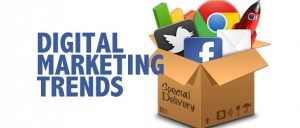THURSDAY APR 28, 2016
The digital age has bridged the gap between businesses and customers with social media, display advertising and e-commerce. New technologies are constantly being developed to fulfill the dynamic needs of content hungry consumers. Industry experts note 2016 as the breakthrough year for VR, for the major shift it is bringing in the market of content creation and experience. Virtual Reality has the potential to become the most important technological advancement since the transition between 2D and 3D. It is attracting vigilant marketers because it provides answers to the most important question – how do you advertise a product or service without showing its attributes? More than the technology, they are betting high on the applications of the technology, which are abundant. From its initial fad, VR has now moved towards serious business.
Marketers constantly strive to create a memorable experience for their customers. They have recently found solace with VR, as it can transform several practices of digital marketing. Facebook has started testing 360-degree video ads with some of the big brands such as AT&T, Samsung and Nestle. Tata Global Beverages, which rose to fame with its ‘Jaago Re’ advertising campaign, launched Tata Coffee grand with a virtual reality tour of Tata Coffee plantations in South India and showcased it on all its digital platforms to reach out to the masses. “We wanted to do something very different. So we started with an experience that speaks for itself, a virtual reality tour of freshness homegrown”, said Ashutosh Munshi, Creative and Content Director at Rediffusion/Edelman India, in an interview with Afaqs.

In India, Tata Motors truly tested the waters by using virtual reality with digital platforms to promote its newly launched Tiago car. A separate supplement was attached with TOI, which featured a full-page ad of the car, soccer sensation Lionel Messi along with a free VR headset. The users were asked to download its application to experience a virtual drive of the new Tiago or simply watch it on Youtube. The application included information on the car’s features, specifications and price as well. This campaign instilled curiosity in the audience for the product as well as the experience Tata wanted to share. Similarly, Volvo also released its test drive experience of Volvo XC90 with VR on social media platforms. This shows that VR is not just for live content; brands are also using it to share product experiences and market lifestyles. These campaigns successfully triggered intriguing conversations about the car and the new technology on digital platforms.
We, at Meraki believe in putting our heart and soul in our work to create the best immersive live action and animated 360 degree videos and content. Slowly but gradually, Indian marketers are acknowledging this new technology as a cleft in the mundane. Our foresight is to cover the entire diaspora of potential fields such as events, concerts, tourism, adventure, sports, fiction and more. The big players of the Silicon Valley show tremendous scope in this technology and it appears that the VR landscape is poised to grow. Michael Abrash, Chief Scientist at Oculus once said in an interview, “Welcome to the Virtual Age.”

